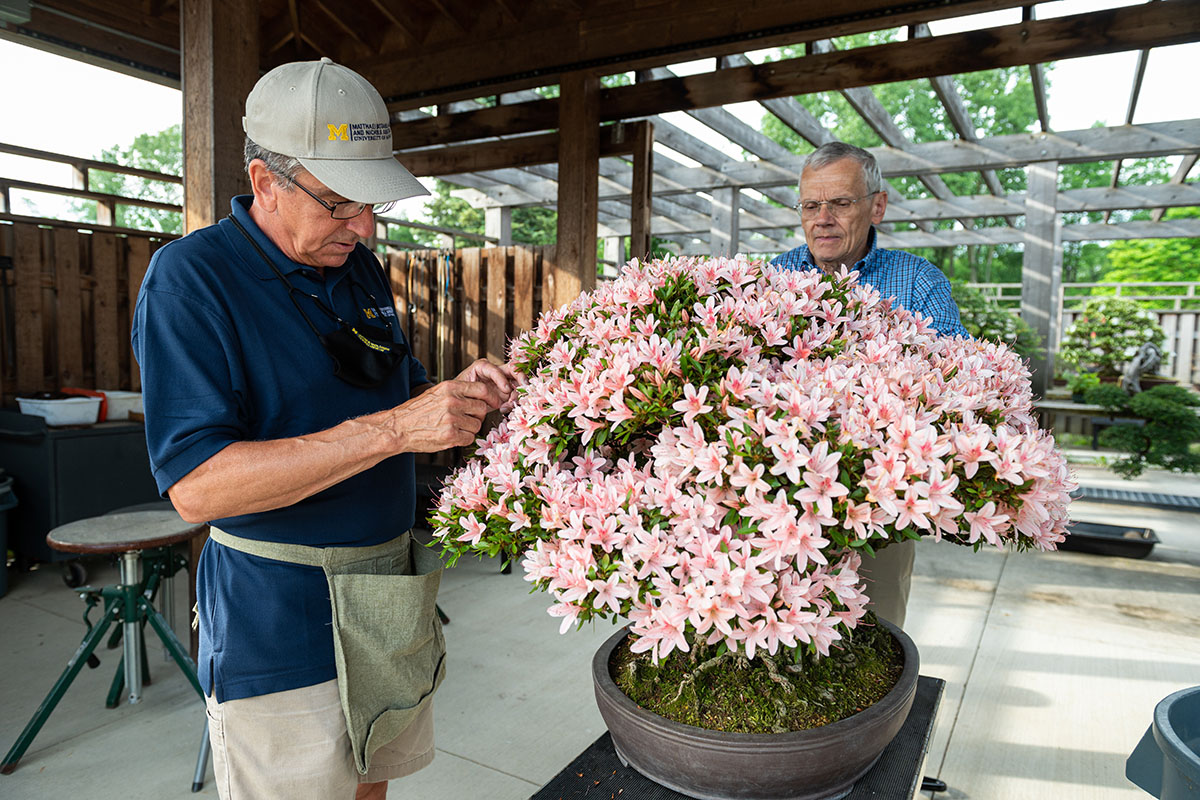Matthaei Botanical Gardens
Free Admission
1800 N. Dixboro Rd, Ann Arbor, MI
Little trees, big impact
These little trees tell big stories of themselves, their artists, and those imagined by viewers. They celebrate relationships and somee demonstrate generations of care. Bonsai brings people together to admire the trees and each other.
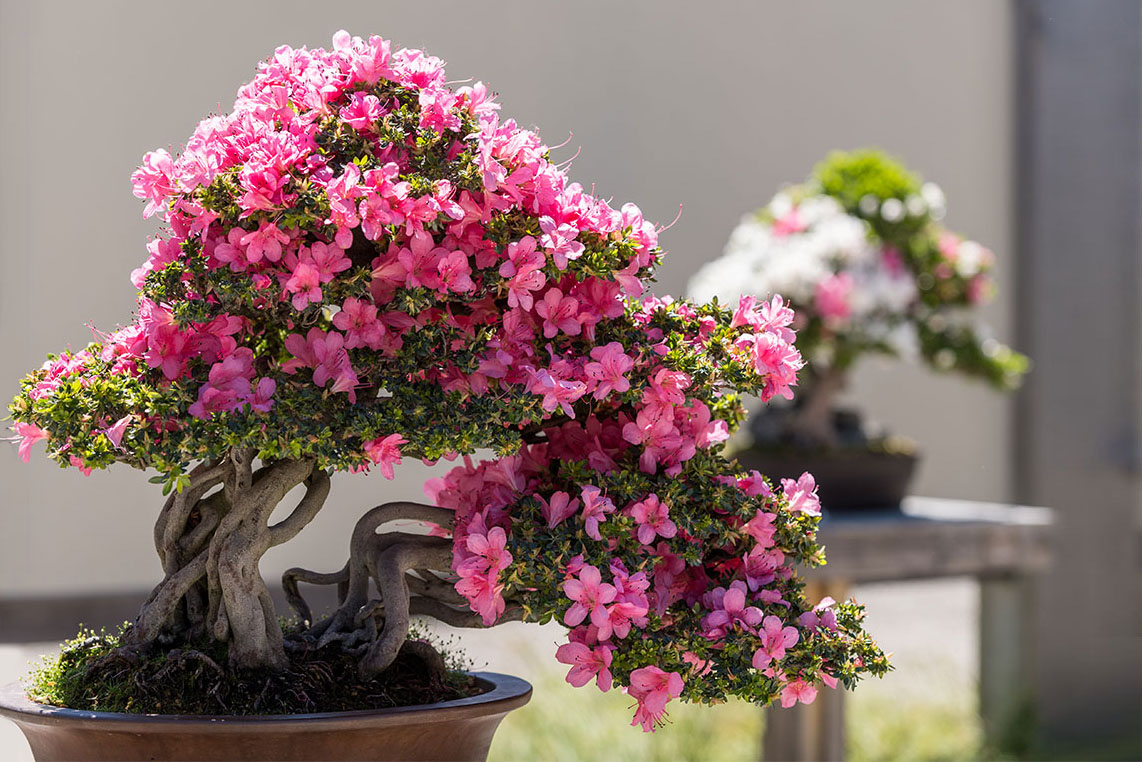
The Trees
Enjoy nationally and internationally ranked specimens of azaleas and pines of all sizes. An array of bonsai developed by American-trained artists are complemented by rarely seen wild-collected ancient trees.
The Styles
Styles help each plant tell their stories and inspire reflection. They include the number of plants, how they relate to the pot, and the visual movement the composition inspires. These styles are rooted in 2,000 years of the art’s development.
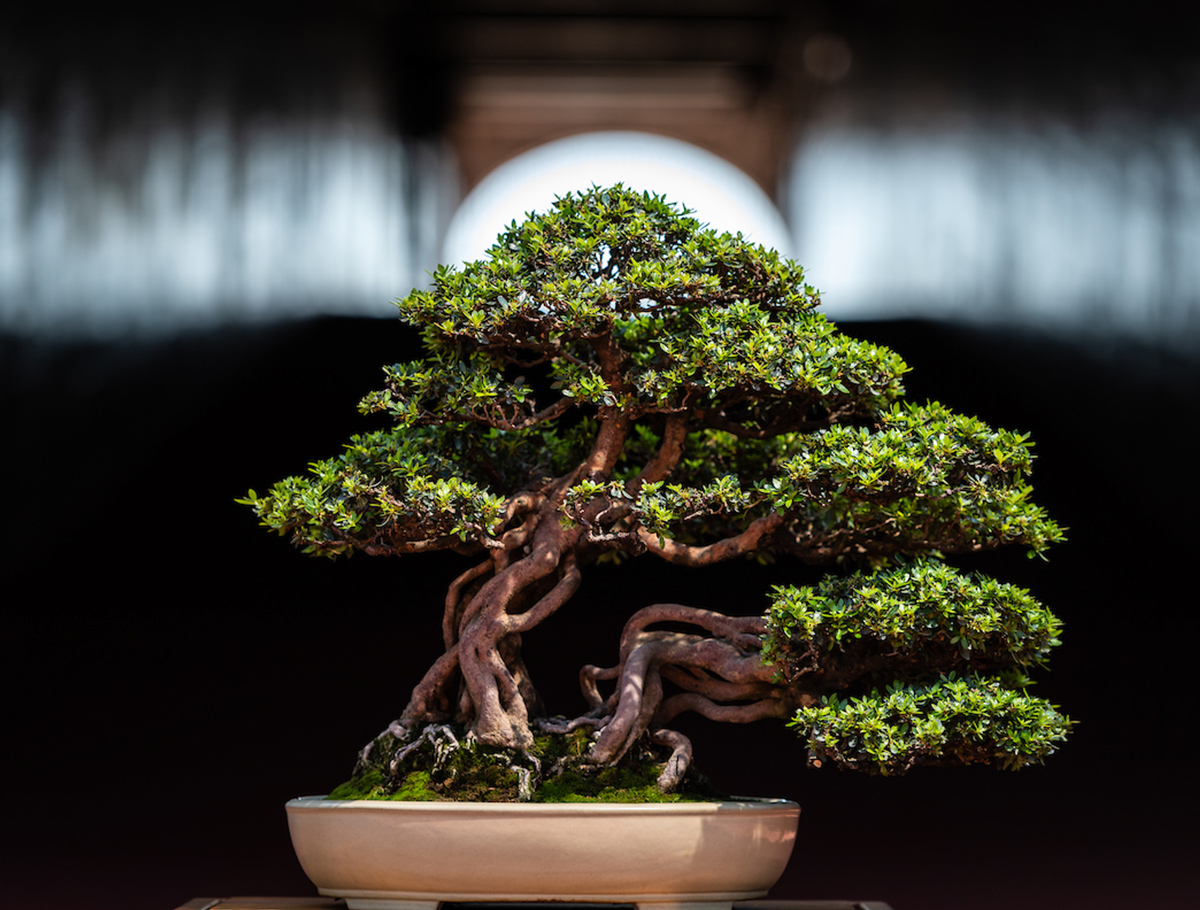
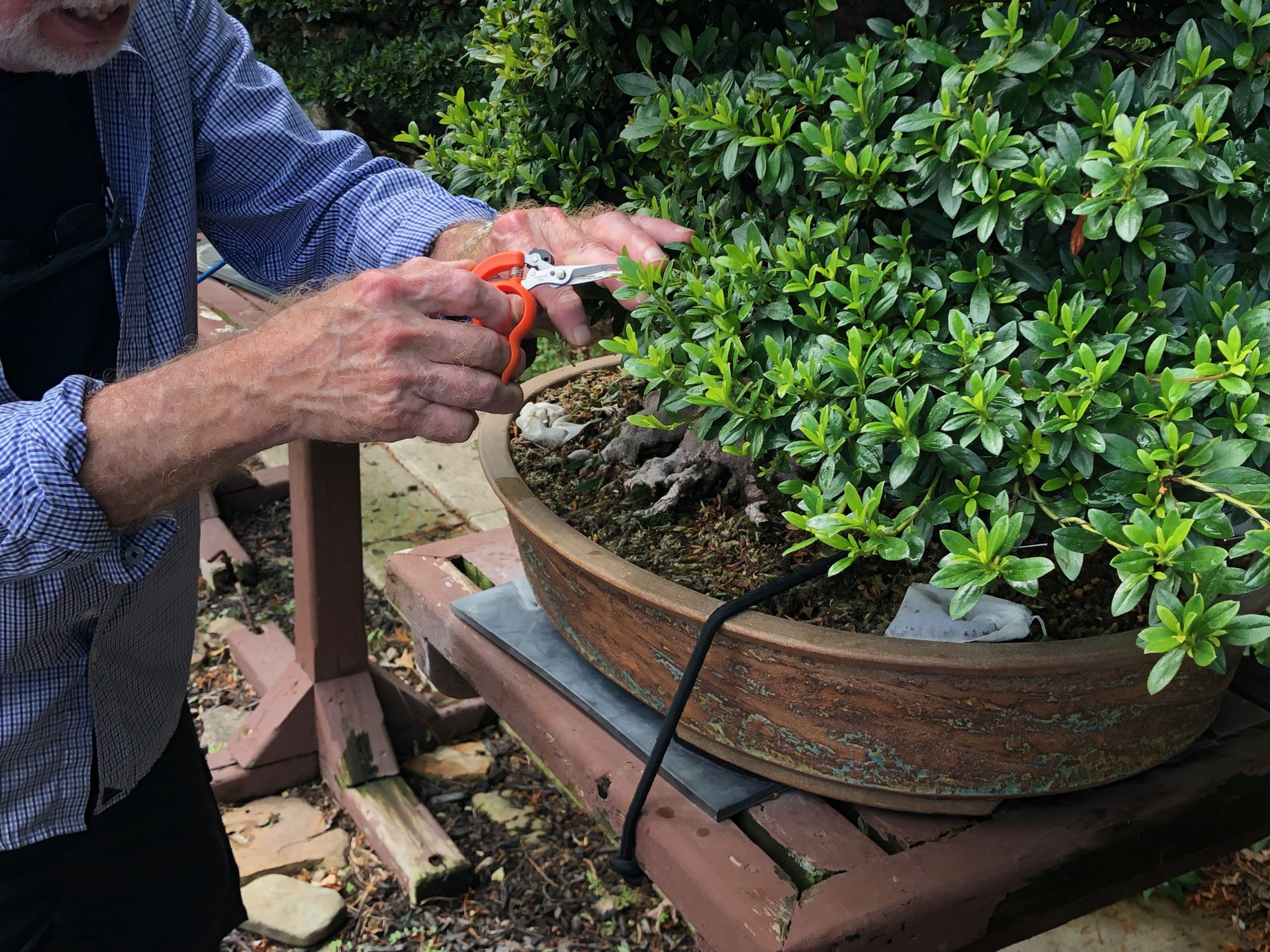
The Display
Bonsai are made to be beautiful. They harmonize horticultural and aesthetic techniques of miniaturizing trees to embody the principles that govern nature.
Each generation of artists engages with bonsai slightly differently, giving a momentum to how they are understood and shifting the various kinds of ‘meaning’.
Spin the Tree
While Bonsai are traditionally styled to be appreciated from a specific viewpoint, they are interesting to enjoy from every angle. We invite you to get to experience this by spinning the bonsai below.
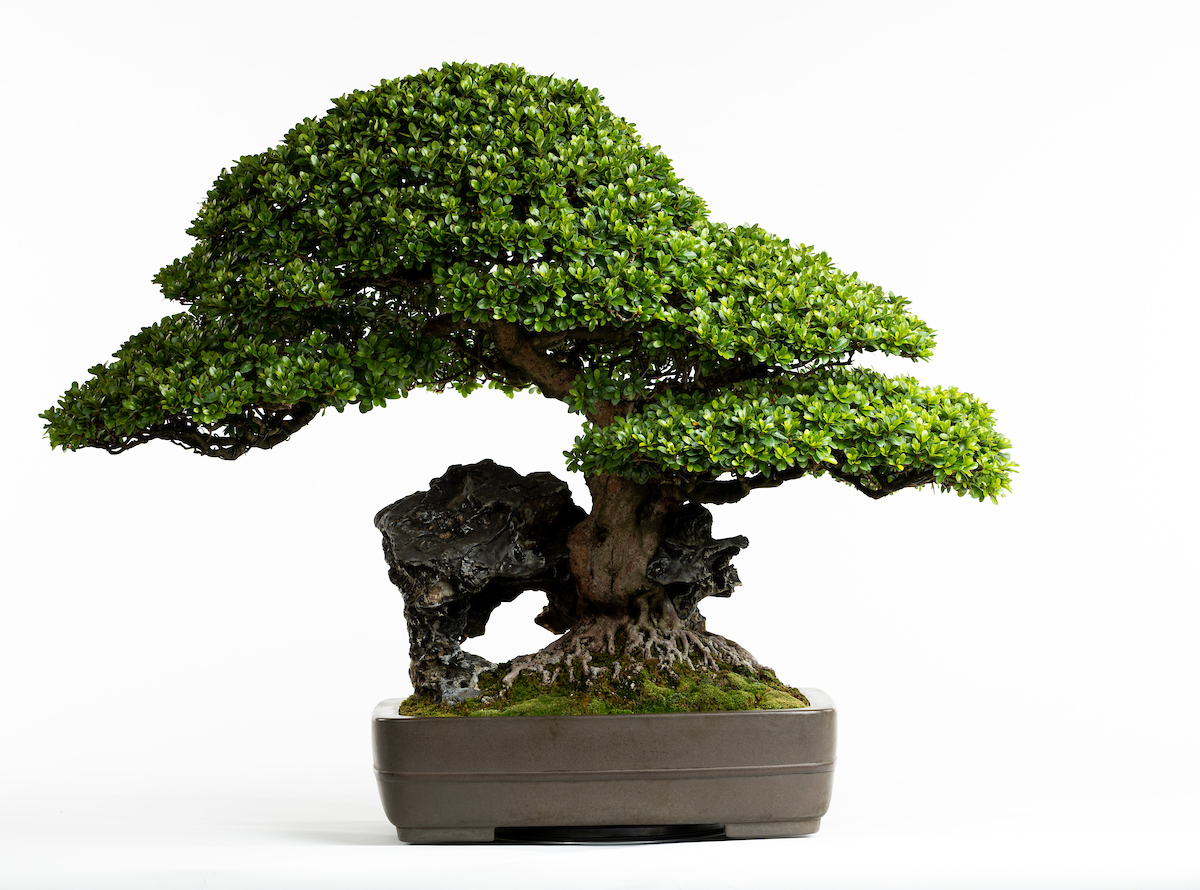
Moving to Leadership
A bold future beckons: engaging people new-to-bonsai while deepening our existing relationships and networks. Everything depends on our specimens being exemplary. As we on-board one of the continent’s most important private collections, we’ll be refining our existing collection and expanding our audiences.
We need your help – spreading the word, coming to see the specimens through the year, learning more, and supporting us.
